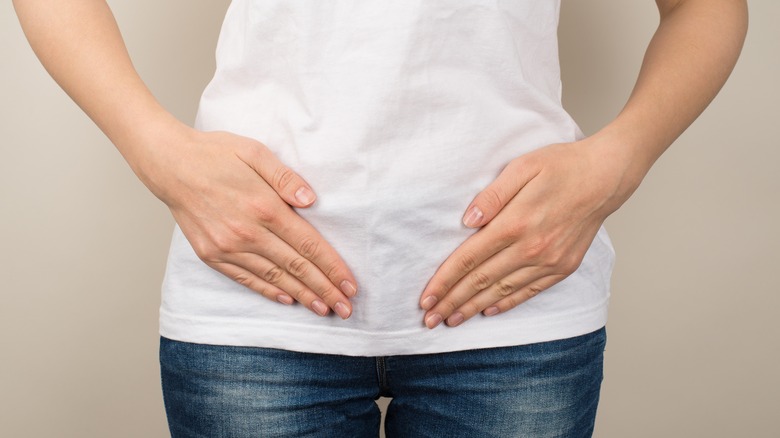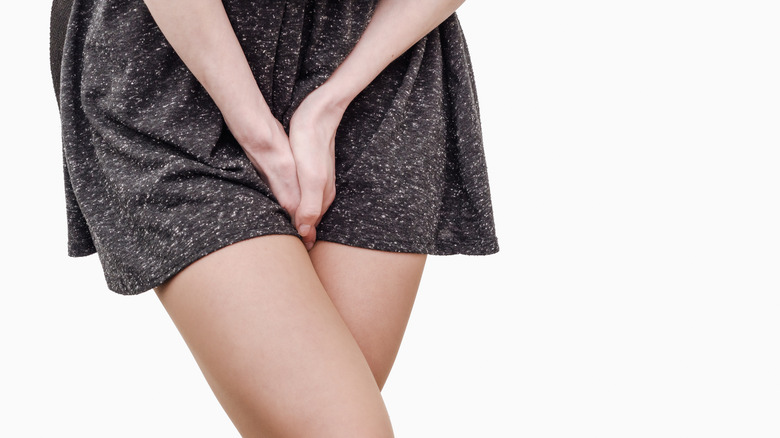Are Kegel Exercises Good For You?
Kegel exercises are not your typical exercise. They target muscles you never see but regularly use, namely your pelvic floor muscles. Cleveland Clinic explains that these muscles run from your pubic bone to your tailbone. Your pelvic floor muscles support several tissues and organs, including your bladder, rectum, small intestine, urethra, and bowels. These muscles help you control your bladder and bowels, and they also help your body move urine and feces out of your body. The three primary muscles involved with kegel exercises are the bulbocavernosus, pubococcygeus, and the iliococcygeus muscles.
You can identify your pelvic floor muscles fairly easily. They're the same muscles you would use to stop urinating. Harvard Health Publishing explains that you can also identify these muscles if you pretend you are trying to stop from passing gas. To perform a kegel exercise, simply clench and hold the muscles for three to five seconds and release them for three to five seconds. Repeat 10 times throughout the day.
Kegel exercises strengthen your pelvic floor muscles
Developed by gynecologist Dr. Arnold Kegel, kegel exercises were aimed to help women who suffered from urine incontinence, per Harvard Health Publishing. That said, men and women who suffer from bladder, stool, and gas leakage can benefit from performing these exercises. According to WebMD, they may even enhance sexual performance.
When your pelvic floor muscles weaken, they can cause pelvic organ prolapse, in which pelvic organs droop. This condition mainly affects women, and the chances for developing it increase with pregnancy, surgery in the pelvic region, vaginal birth, frequent sneezing or coughing, and genetics, per WebMD.
After a few months of performing kegel exercises, you should experience less leakage. You'll also have to do them regularly to continue to reap the benefits, suggests WebMD. However, you should avoid doing them when you need to urinate because this could lead to a urinary tract infection.


